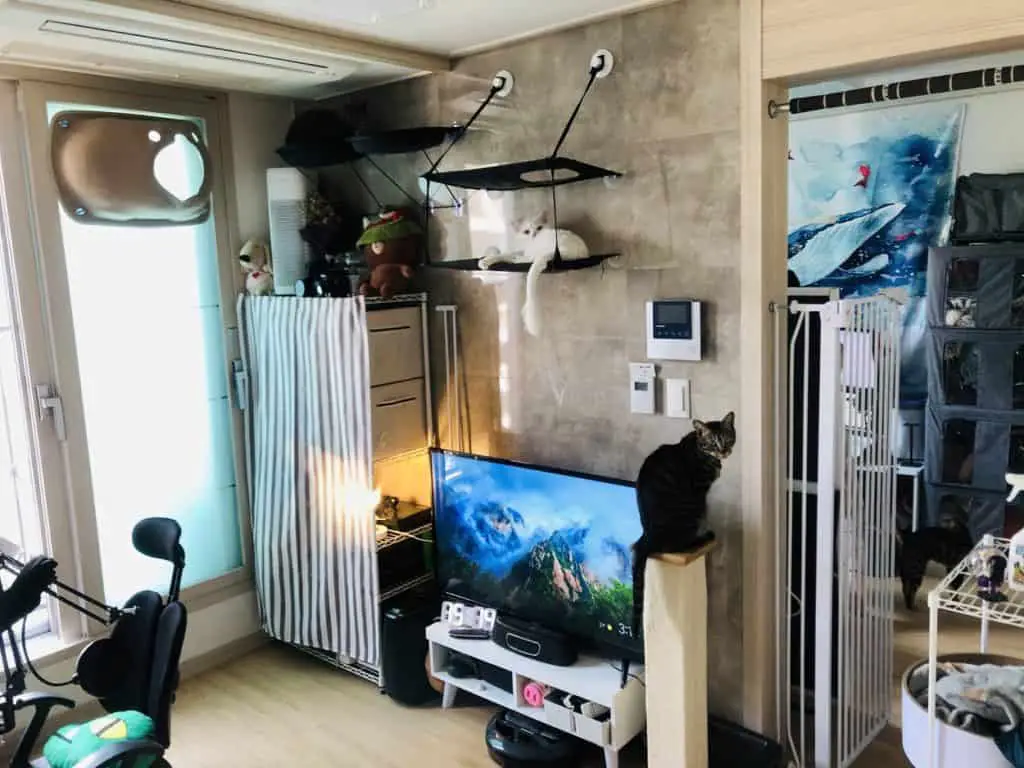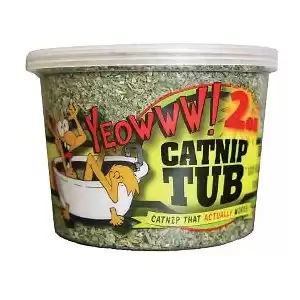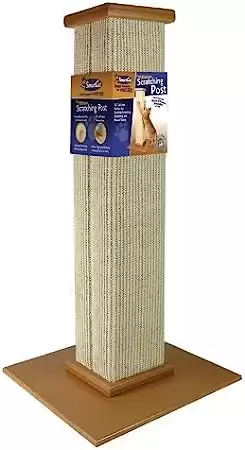Perhaps it’s a human thing to want bigger and larger spaces that we project onto our pets. It’s an interesting thing to observe and take notice of. As such, when cat owners talk about the well-being of our cats, we tend to get concerned about the size of their living space. Cat owners might even feel quite bad or guilty for keeping their cats in such spaces!

It’s a common misconception that cats are happier in large houses, but the truth is that it’s not the size that makes cats happy, but the amount of environmental enrichment that’s in it (that allows cats to behaves as cats would in the wild). In fact, small apartments can be just as good an environment for cats as large houses, as long as the living space is well-designed for the cat’s needs.
Therefore, to answer the question of cat happiness in large houses or small flats/apartments is quite simple: it doesn’t matter. A cat’s welfare and wellbeing aren’t dependent on the size of the space but rather it’s dependent on how many behaviors it is able to perform that are natural to them in the space. Therefore, to increase a cat’s quality of life in any sized living space, it’s important to understand what behaviors it is that our cats need to exhibit to be healthy mentally and physically.
What behaviors are those? Well, if you look below, it’s an answer that’s usually right under our noses.
Of course, there are always exceptions, and some spaces are too small for any animal to live in. In this article, we’ll discuss what matters to a cat in their living space and how big of a home you actually need to properly care for a cat.
What Makes a Cat Happy Indoors?
As more and more cats move into an indoor-only type of living situation, there are a lot of questions that come up from cat owners might have about their cat’s happiness and wellbeing.
All cat owners have the basic understanding that cats need a litterbox, food, a scratching post, high places to perch/survey their area (read here for budget ways to catify your space for any home environment!), and ways to exercise their basic need to hunt.
Basically, we humans are pretty good at providing for our cat’s physical needs.
When we dive a little bit deeper into a cat’s natural behaviors we sometimes forget they have an important sense that directs a lot of natural behaviors: their sense of smell, and the perception of different smells. Olfaction.

In a 2016 study by the Oregon State University about stress, security, and scent and how it influences domestic cats – the study emphasizes that olfaction and chemical cues play a role in stress and anxiety reduction and security in their environment. A better understanding of a cat’s chemical signals and how its used in their daily lives may lead to increased wellbeing as humans/cat caretakers can apply the knowledge to their own cats.
Here are some of the important points and highlights:
- Indoor cats lack places to deposit their scent. Cats usually deposit their scent in one of two ways – scratching or rubbing their scent glands (paws pads, their cheeks, lips, forehead, flanks, tail and also two anal glands).
Solution: provide more ways for the cats to do this. Either more scratching posts, climbing areas, and more vertical surfaces for your cats to deposit their scent on.
- Indoor cats lack the opportunity to encounter a wide range of changing scents. Cat’s love to explore, even when it means that it’s potentially hazardous. A part of exploration is discovering new scents.
Solution: spread out and rotate different scented cat-friendly items around the home for them to discover and interact with. A good way to do this is to have 2 different bags of catnip (there are a lot of different kinds of catnip) and place their toys in there and rotate them out every couple of days.
Another solution is to give some sort of controlled access to the outdoors or leash training your cats so that they’re able to encounter these scents. A lot of apartments might have a balcony area – the simple way to give them this outdoor access is by just putting a cat enclosure out in the balcony and let the cats bask in the sun, and experience the different scents.
The third way is to bring the outside in. Plants, grass, etc. It just takes some creativity to be done in a way that fits your life too!
- Cats are naturally comforted by the scent of themselves. The study mentions scent as a ‘spatial reference tool’. Certain places and items create their ‘cat space’ and gives them security. This means that placement and the location of these items are important for cats. Some of these items include the litter box (the litter box placement is one of the most important things that a cat owner should know), scratching posts, and cat beds/blankets.
Solution: spread these scent items throughout the home, in addition to having more of them. Usually, the placement of these items where there is a lot of traffic (read: changing scents), the stronger the effect.

The key for cat owners that exclusively keep their cats indoors, no matter the size of the home, is to take a more well-rounded approach to care for their cats. Being aware of their behavioral needs, in addition to physical needs is vital to your cat’s sense of space and thus, their mental health.
How Much Space Does a Cat Need?
A cat really doesn’t need that much space but there is such a thing as too small. When it starts to become a hazard walking around for you or your cat- then frankly, it’s too small. This usually occurs when space is smaller than 18 square meters.
Another important note is that the smaller the living space or the more cats that an owner might have, the more attention butlers need to give each cat to prevent negative behaviors from developing as the cat will have closer contact with everything.
| Maximum # of Cats | Minimum Apartment Size | Comments |
|---|---|---|
| 1-2 | Approximately 18 square meters | One cat generally won’t be too fussed about the size nor will they care much about elevated spaces because they’re the sole owner of the space. Two cats will require some catification to provide more enrichment and ways they can navigate the space. |
| 2-3 | Approximately 30 square meters | When there are multiple cats that live in a small space – we have to think about our small space as a room with many zones. To provide more zones is to provide more vertical places to get to. Remember, cats are territorial and if they have more territory (it doesn’t matter if it’s horizontal or vertical), the more confident they are. As a result, the higher chance for healthy relationships between cats and humans. |
| 3-4 | Approximately 40 square meters | 3 or more cats in a small space definitely need a lot more thought and creativity of how to use the amount of space that is available. Additionally, extensive knowledge of cat behaviors and solutions to any issues that might arise. |
For people that want to know exactly how small living space can be to have cats with additional tips and guides, read here: Is Your Apartment Big Enough for Cats?

I am currently living in an approximately 30 square meters apartment with 4 cats at the time of this writing. I have lived with my cats exclusively here for years in apartments around this size. It can be done with a bit of creative thinking and creating good habits that your cats can follow.
Recommended Tools/Items For Indoor Cats
Here are some items that I use daily to either give my cats more places to deposit their scent on or differ the scents around my home.
Of course, you can always visit my recommended cat supplies page for a curated list of the things I use for my cats!
 Yeowww! Organic Catnip
Yeowww! Organic Catnip
This high-quality signature blend contains just leaves and flower tops for the most effective catnip. It’s superior to your everyday catnip in terms of freshness, color, and aroma. No chemicals or pesticides are used in cultivation, which means Yeowww! catnip is completely safe for cats and humans. Sprinkle a little on your kitty’s favorite scratcher or use it to stuff your own handmade toys.
 SmartCat Pioneer Pet Ultimate Scratching Post
SmartCat Pioneer Pet Ultimate Scratching Post
An appropriate name for this cat scratcher. Durable, stable, and tall enough for our cats to stretch out. It really is the best vertical scratching post. I've used this cat scratcher for years and it's still being used daily today.
